Pandemic Architecture, an International Ideas Competition curated by the Design Ambassador for ARCHISEARCH.gr, invited the creative community to open up a dialogue and create a think tank, looking for ideas from the architectural and design community about the future of the living, the workspace, the public space and the tourism industry after the outbreak of Covid-19.
India has a population of 1.38 Billion people, making it World’s second largest country by population.
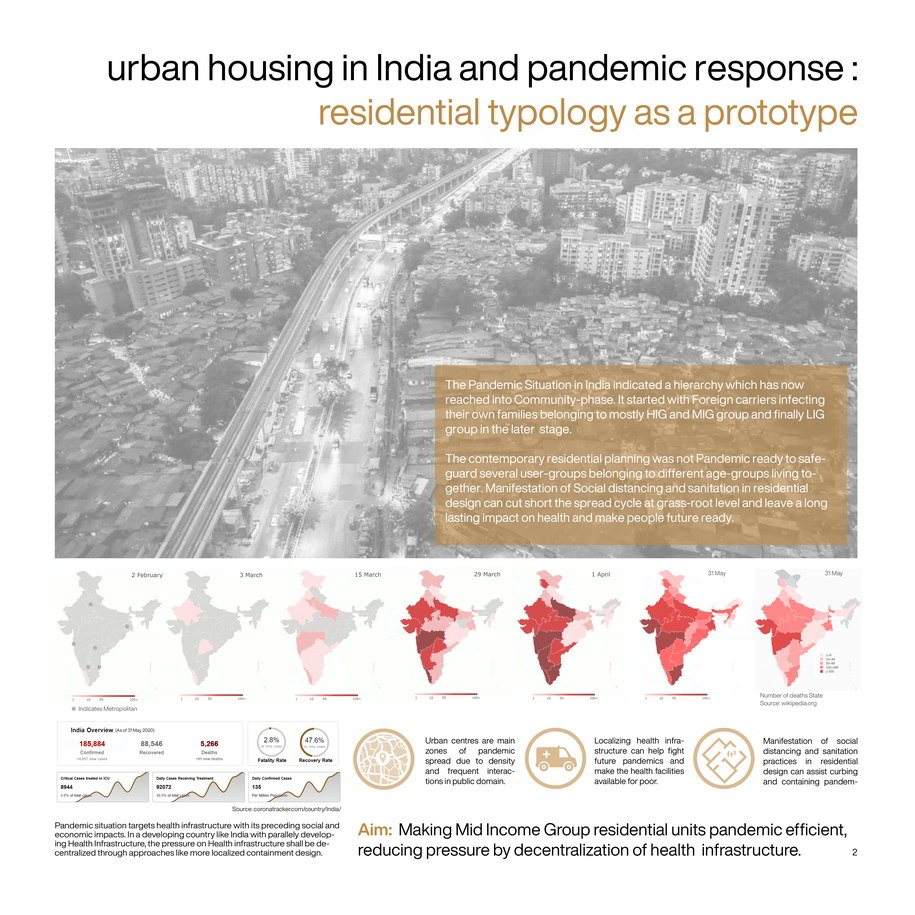
In a developing country like India with small Health Infrastructure, the pressure shall be decentralized through approaches like more localized containment designs.
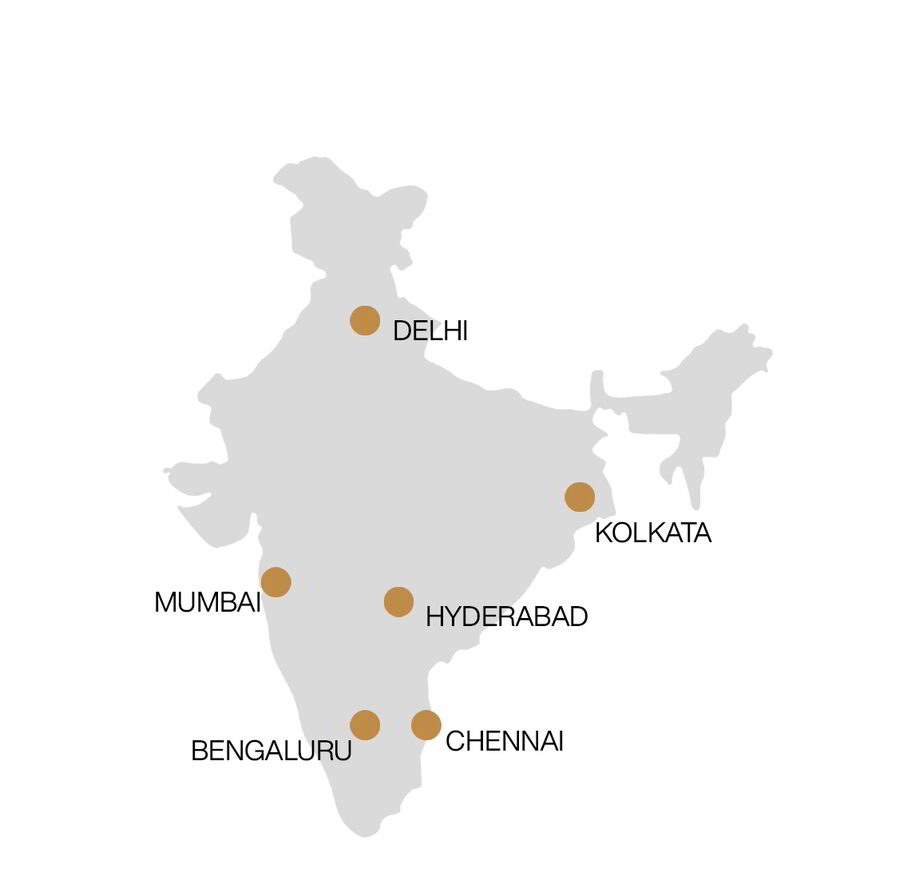
Urban centers are main zones of pandemic spread due to density and frequent interactions in public domain.
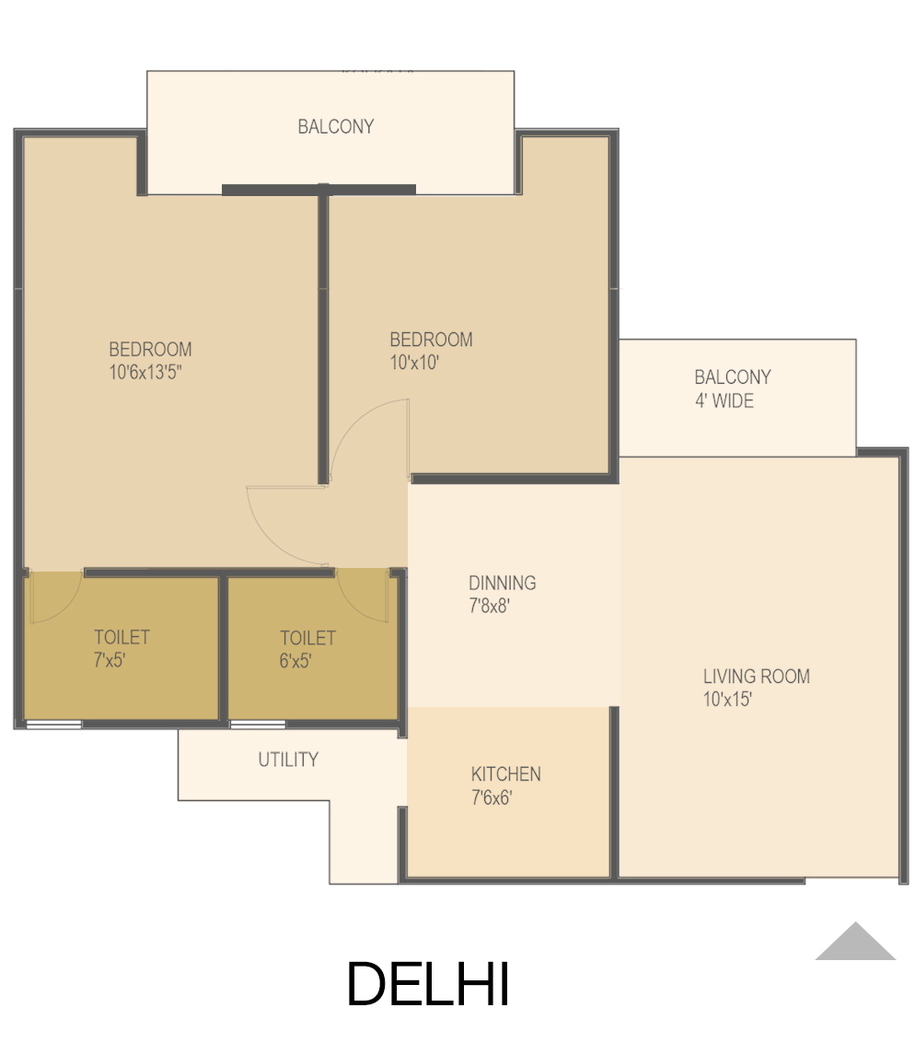
The contemporary residential planning was not Pandemic ready to safeguard several user groups belonging to different age-groups living together.
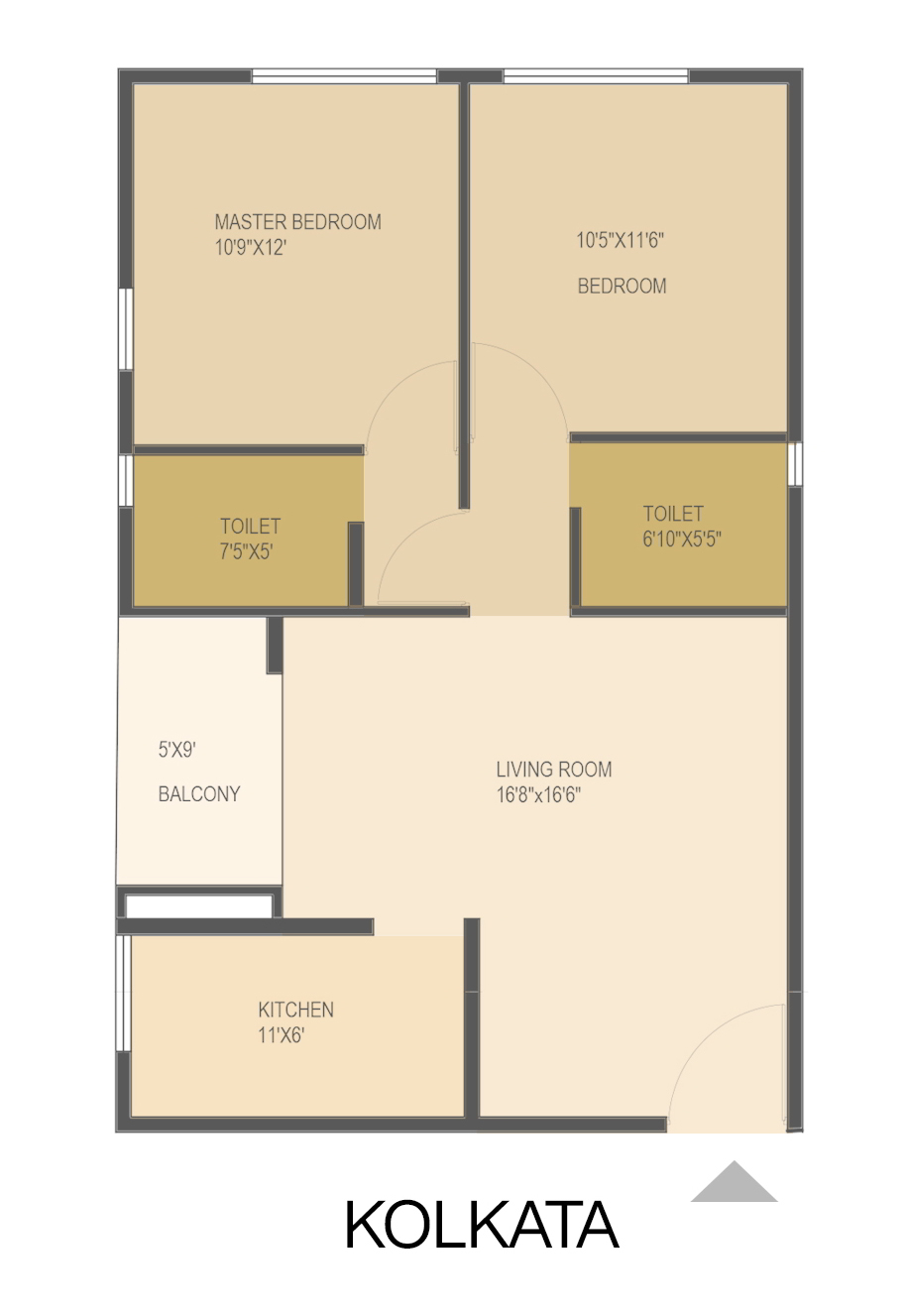
Localizing health infrastructure can help fight future pandemics and make the health facilities available to poor. The Aim of the project is making “Mid Income Group” units pandemic efficient, reducing pressure by decentralization of health infrastructure.
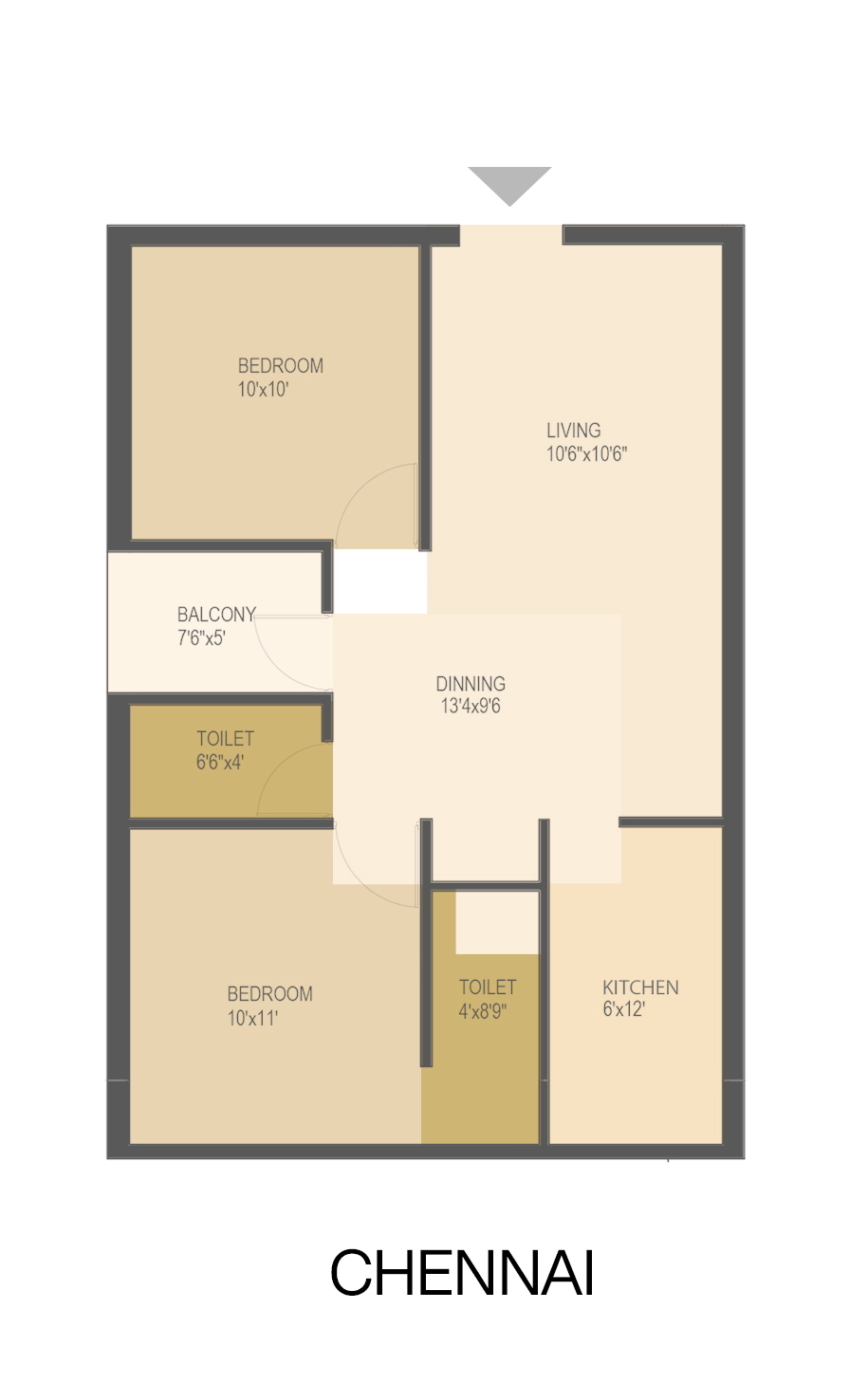
As per the studies done for 2 BHK MIG dwelling unit in 6 major metropolitan Indian cities it was discovered that a typical 2BHK module discarded flexibility of spaces leading to no response to different age groups for Indian joint family system.
Also, a Centralized Circulation space gives lesser scope for segregation during pandemic situation.
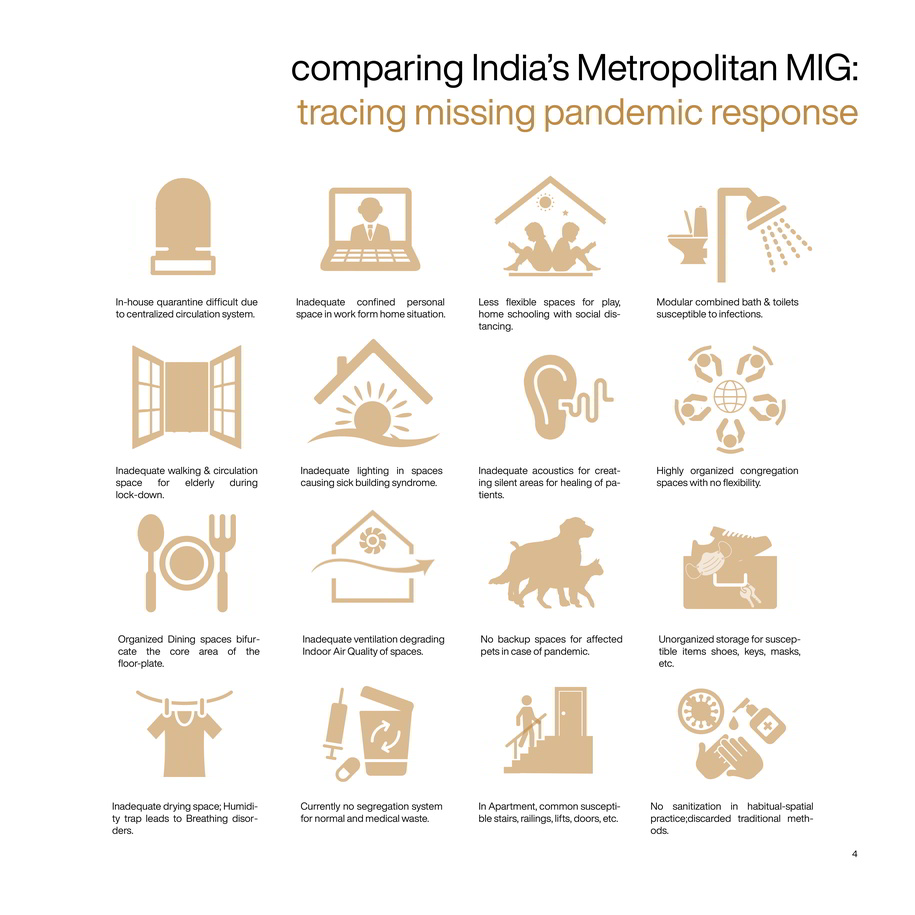
For creating the response, traditional Indian space planning for country houses utilizing traditional knowledge system was reinterpreted through the dwelling unit design.
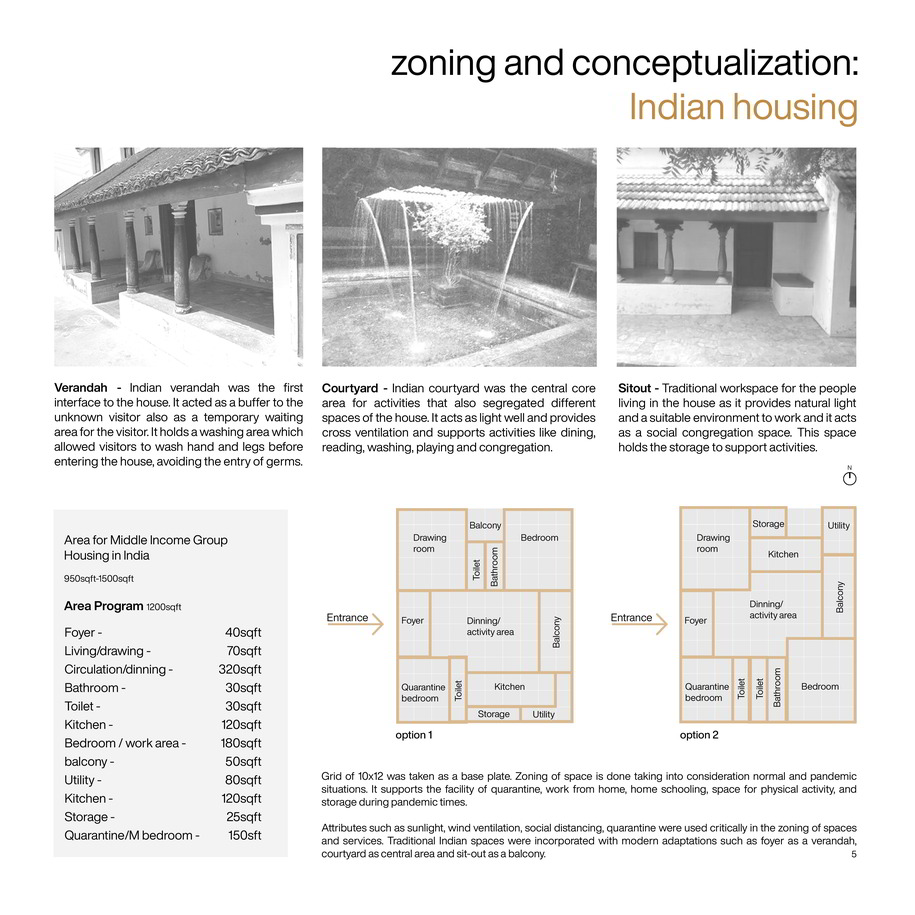
The ideal situation of quarantine is created by having the unit in the outer edge with immediate access from outside called as Foyer which can be used as a prelude or transition space for receiving online orders from outsiders, storing most susceptible components like shoes, medical kits, keys.
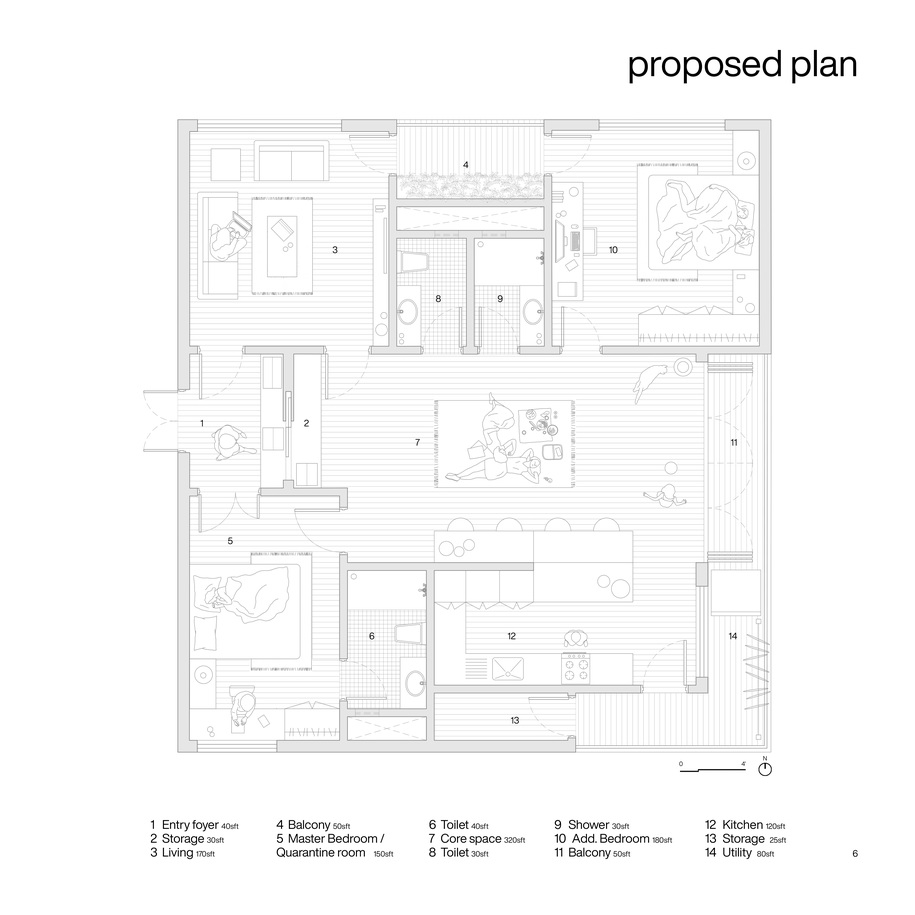
It can also be used by health workers for checking the affected, thus keeping the other members of family safe.
Entrance is defined as a niche in the Centre opening to quarantine room and living on either sides.
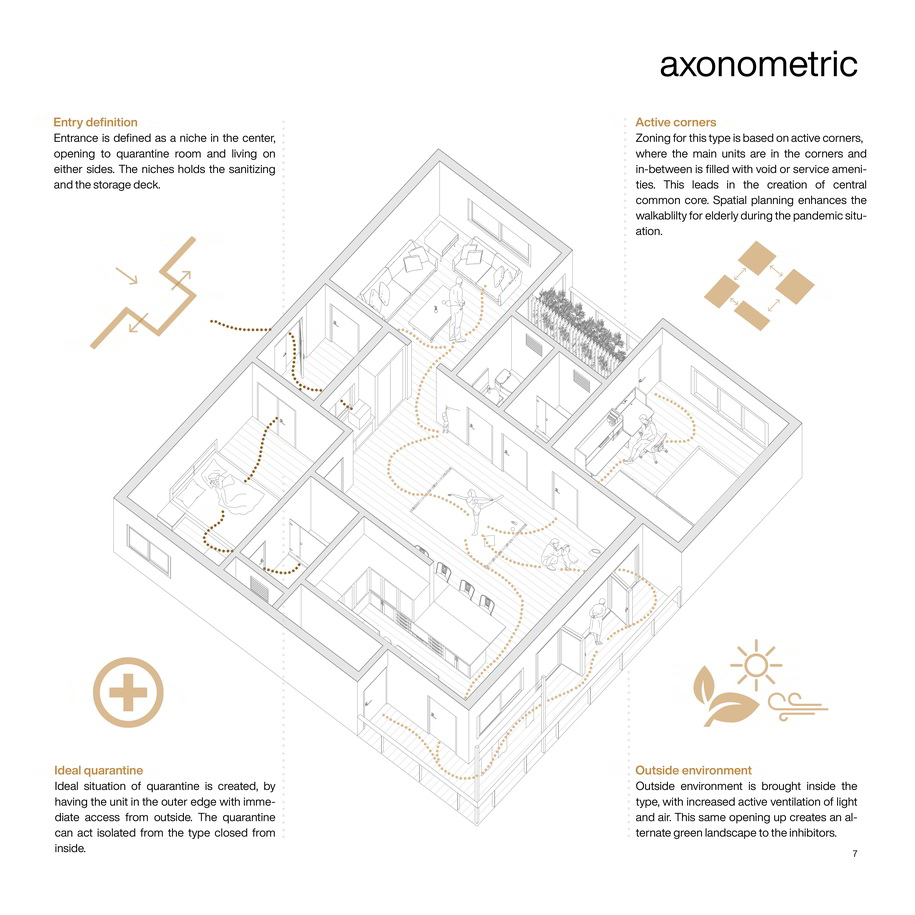
The niches holds the sanitized and the storage deck.
Zoning for this type is based on active corners, where the main units are in the corners and in between is filled with void or service amenities. This leads in the creation of central common core.
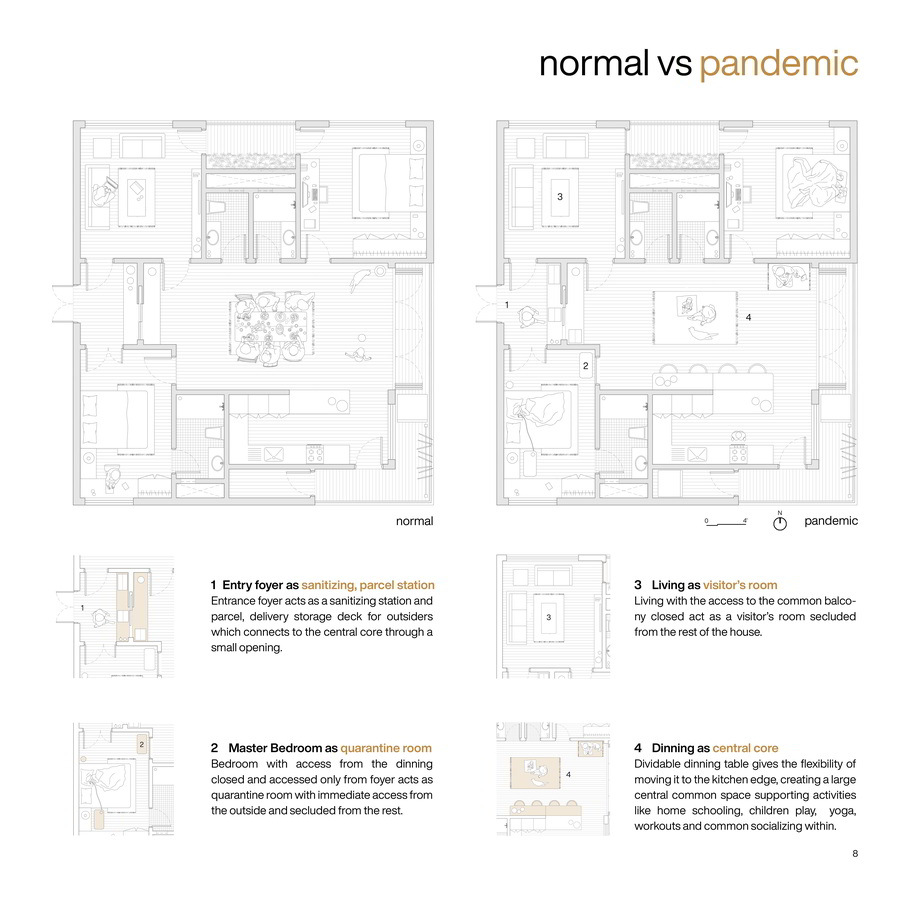
Outside environment is brought inside with increased active ventilation of light and air.
The layout increases walkability for elderly when in case of lockdown situation.
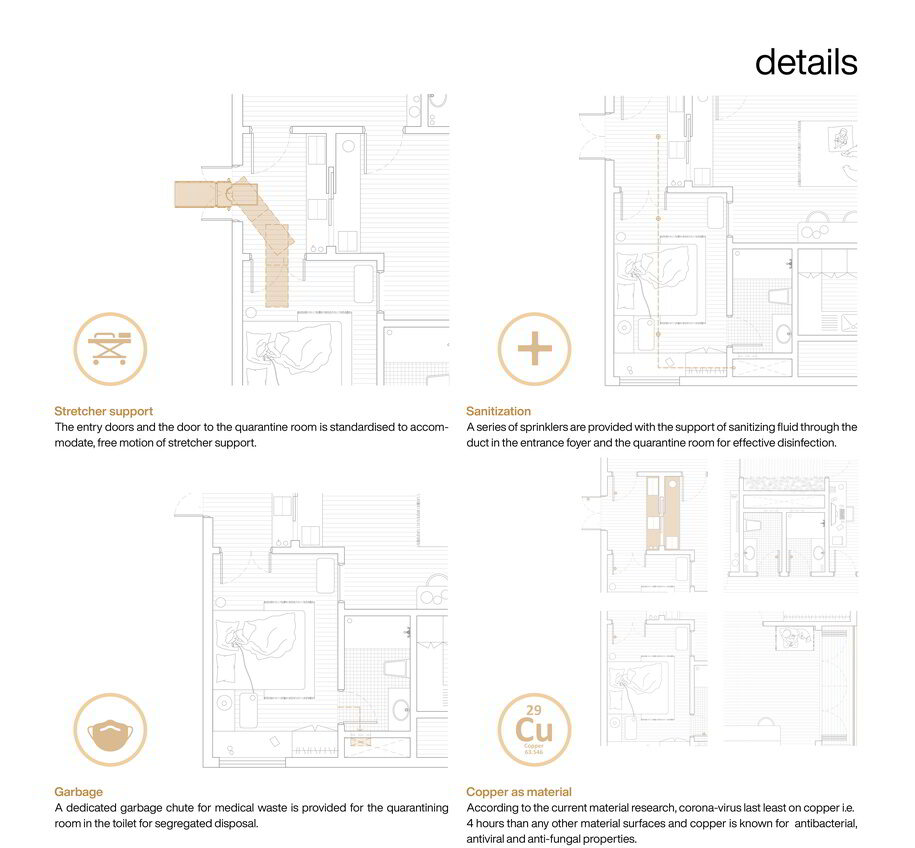
The flexible space can accommodate multitude of activities creating separate active and passive corners.
Manifestation of Social distancing and sanitation in residential design can cut short the spread cycle at grass-root level and leave a long lasting impact on health and make people future ready.

Facts & Credits
Participants: Rakesh Parmar
Karthik Patali
Karthik M
Country: India
The project was longlisted in top 100 out of 440 projects.
The impact of Pandemic Architecture competition on the international architectural community was astonishing, with the number of registrations to exceed 800, with the final proposals to exceed 400 and with participants from more than 60 different countries.
Results will be officially announced on the 20th of September.
_________________________________________
Check out the open call and the jury here!
READ ALSO: Emergency Design: Resilient Community Hospital and its adjacent public infrastructure | Pandemic Architecture Top100